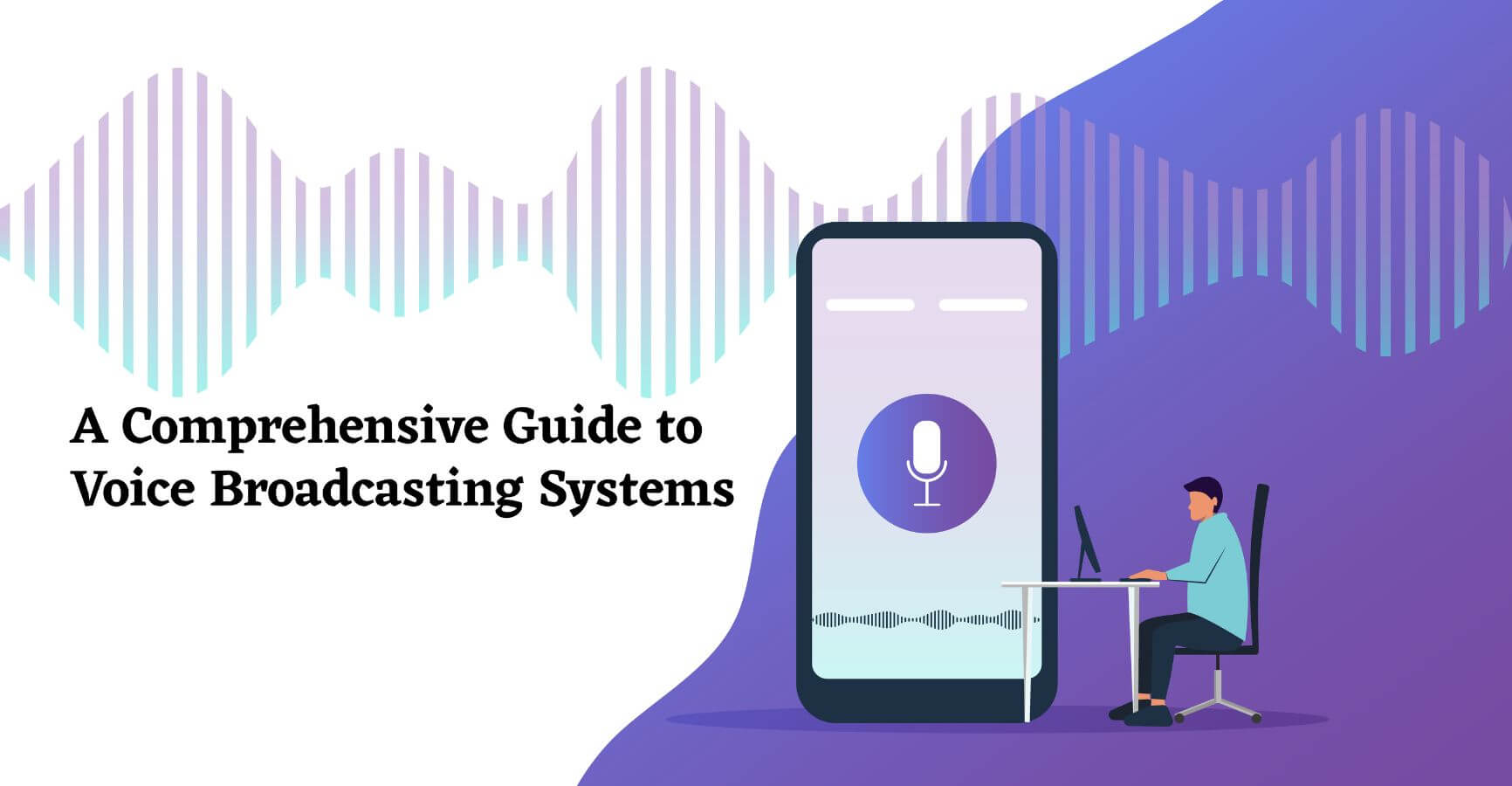In the ever-evolving landscape of communication technology, Voice Broadcasting Systems have appeared as powerful tools that revolutionize the way businesses connect with their audience. From sharing important information to conducting marketing campaigns, these systems offer a versatile and efficient means of communication.
In this comprehensive guide, we delve into everything you need to know about Voice Broadcasting Systems – from their features to their applications and the benefits they bring to businesses.
What is a Voice Broadcasting System?
A Voice Broadcasting System is an automated communication tech that facilitates businesses to broadcast pre-recorded voice messages to a large audience simultaneously. This inventive solution operates a cloud-based infrastructure to streamline the communication process, making it a time-saving and cost-effective tool for various applications.
Key Features of Voice Broadcasting Systems:
A) Automated Message Delivery:
It automates the delivery of pre-recorded messages, eliminating the need for manual dialing and allowing businesses to reach a large audience efficiently.
B) Customizable Messaging:
Businesses can tailor messages to suit specific campaigns or informational broadcasts, ensuring a personalized and engaging experience for the recipients.
C) Scheduling Capabilities:
These systems offer scheduling features, allowing businesses to plan message broadcasts at optimal times for maximum reach and impact.
D) Interactive Response Options:
Advanced Voice Broadcasting may include interactive response options, such as allowing recipients to press a key to confirm, connect to an agent, or opt-out from future broadcasts.

Applications of Voice Broadcasting Systems:
A) Emergency Alerts and Notifications
These are instrumental in delivering timely emergency alerts and notifications to a wide audience. This proves crucial in situations where immediate communication is essential, such as natural disasters or public safety announcements.
B) Appointment Reminders in Healthcare
Healthcare providers leverage Voice Broadcasting to send automated appointment reminders, reducing no-show rates and improving overall patient adherence to scheduled appointments.
C) Marketing and Promotions
Businesses use these tools for marketing campaigns, promotions, and product launches. The ability to reach a large audience with a targeted message makes Voice Broadcasting an effective marketing tool.
D) Political Campaigns and Advocacy
Political campaigns and advocacy groups employ Voice Broadcasting to disseminate information, rally support, and encourage voter participation during elections or important events.
E) Surveys and Feedback
Gathering feedback is essential for businesses looking to enhance their products or services. Voice Broadcasting Systems can be utilized to conduct automated surveys, allowing organizations to collect valuable insights from their audience.
Benefits of Voice Broadcasting Systems:
A) Time and Cost Efficiency:
Automating the message delivery process saves time and resources, allowing businesses to focus on other critical aspects of their operations.
B) Scalability:
These are positively scalable, making them suitable for businesses of all sizes. Whether reaching a small community or a nationwide audience, these systems can adapt to varying communication needs.
C) Enhanced Reach and Engagement:
The ability to broadcast messages simultaneously to a large audience enhances the reach of communication efforts. Additionally, personalized and relevant messages contribute to higher engagement levels.
D) Compliance and Reporting:
It often includes features to ensure compliance with regulations, such as allowing recipients to opt out. Detailed reporting capabilities provide insights into the effectiveness of communication campaigns.
E) Increased Brand Visibility:
Leveraging Voice Broadcasting for marketing campaigns increases brand visibility. Consistent and targeted messaging ensures that the brand remains at the forefront of the audience’s mind, contributing to increased recognition.
F) Versatility in Message Types:
From informative announcements to promotional messages and interactive surveys, It supports a wide range of message types, catering to diverse business objectives.
Challenges and Best Practices
A) Respect for Legal Regulations:
It is essential to adhere to legal regulations regarding voice broadcasting, such as obtaining consent from recipients and providing options to opt out. This not only ensures compliance but also builds trust with the audience.
B) Message Clarity:
Clear and concise messaging is crucial. Messages should be well-scripted, avoiding jargon, and providing a compelling call-to-action for recipients.
In conclusion, Voice Broadcasting Systems have become indispensable tools for businesses seeking efficient, scalable, and impactful communication solutions. From emergency alerts and healthcare reminders to marketing campaigns and political advocacy, these systems offer a versatile means of reaching a large audience with personalized and relevant messages.
As businesses continue to prioritize effective communication in the digital age, integrating Voice Broadcasting Systems into their strategies can be a game-changer. The time and cost efficiencies, scalability, and versatility of these systems make them valuable assets for organizations across various industries, contributing to enhanced engagement, improved reach, and overall success in communication endeavours.
READ MORE:- Automate Voice Broadcasting to Streamline Your Outreach Efforts


